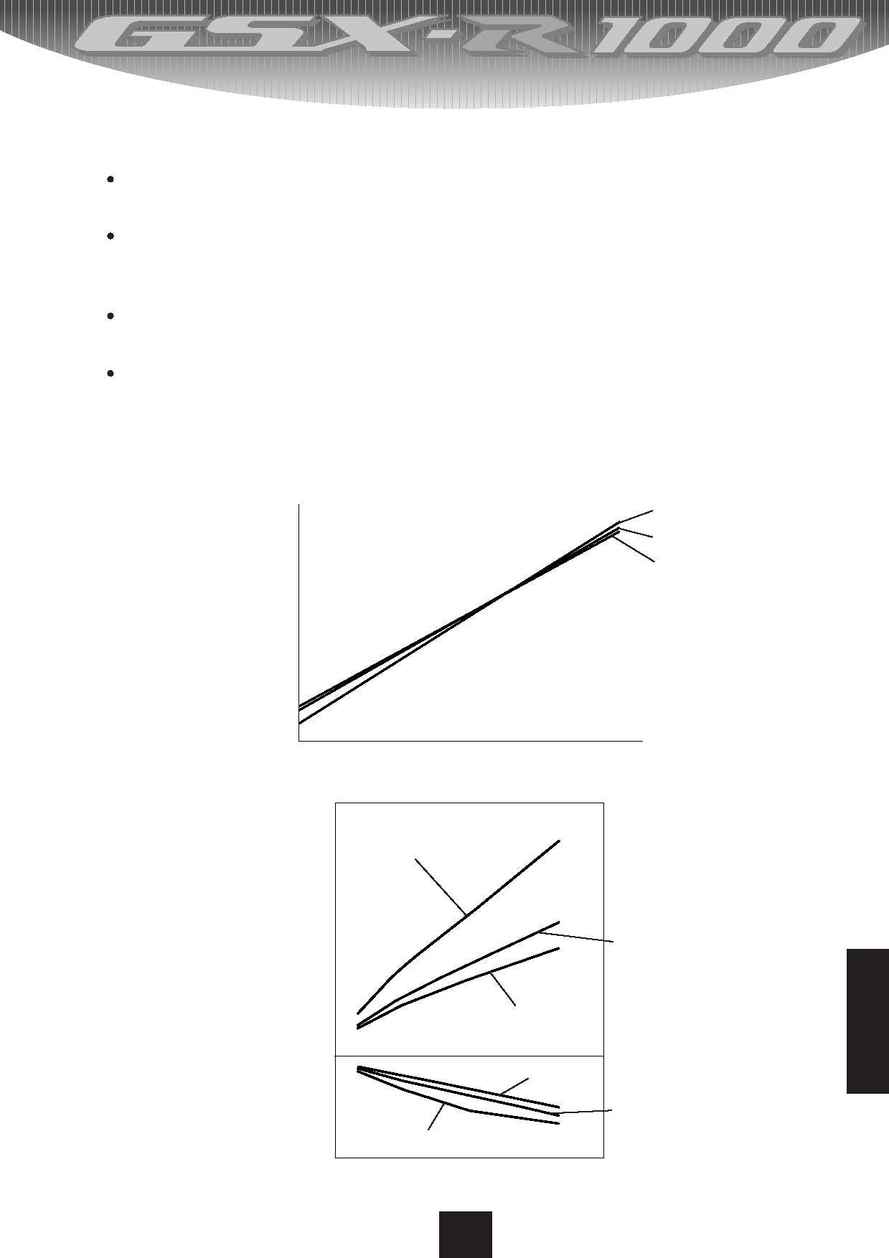Suzuki GSX R 1000 Page 81

CHASSIS
DESIGN
Chassis Design
6-17
(5) Rear Shock Spring and Damping Force Characteristics
The rear shock absorber's friction has been reduced by about 60 percent, by reviewing the inner
parts of rear shock.
The chart below compares the spring and damping forces characteristics of the rear shock on the
2000 GSX-R750, 2002 GSX-R1000 and the 2003 GSX-R1000. The 2002 GSX-R1000 had much
increase for both spring and damping force, compared to the 2000 GSX-R750.
Now, with reduction in friction, the 2003 GSX-R1000, compared to the 2002 GSX-R1000, increase
spring rates by 15 percent, and damping forces are also increased, by 30~60 percent.
By reducing friction, the front fork and the rear shock have both been significantly upgraded. If you
push the front fork and the rear shock with your hands, they will feel soft, but they are firm when
riding. Front fork and rear shock has been improved in terms of shock absorption feeling and the
tires' contact feeling with the ground.
Rear Shock Damping Force Characteristics
Rear Shock Spring Characteristics
Piston Speed
Rebound
2003 GSX-R1000
2000 GSX-R750
Stroke
Load
2002 GSX-R1000
2000 GSX-R750
2003 GSX-R1000
2002 GSX-R1000
2003 GSX-R1000
2000 GSX-R750
2002 GSX-R1000
Compression
